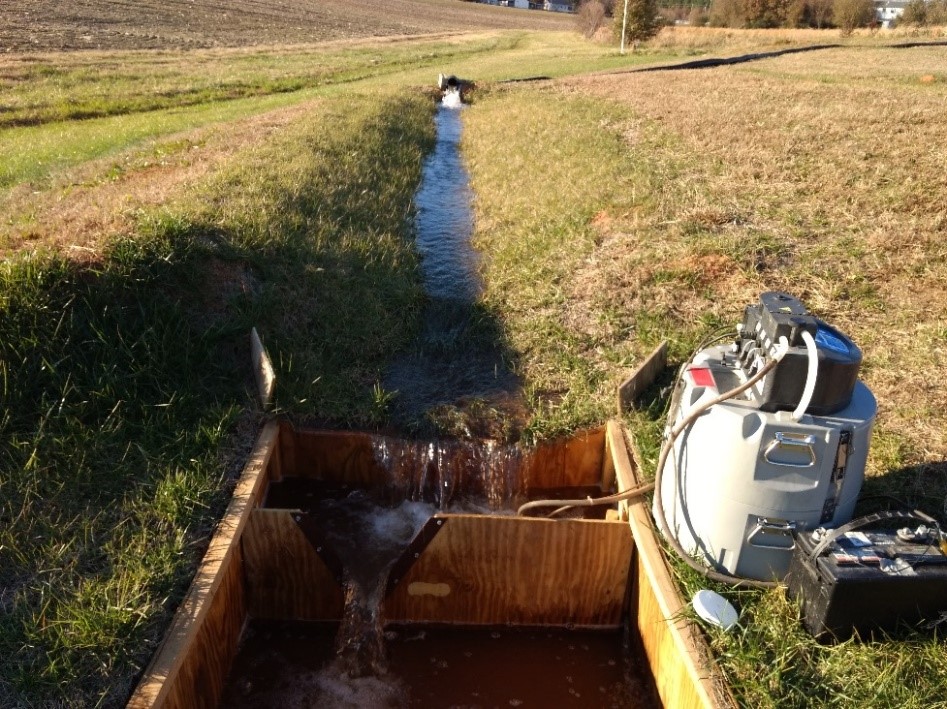The goal of this study was to evaluate the effects of three key design parameters and two storm sizes on swales’ hydrologic and water quality performance. Three design factors with two levels were evaluated for their effect on the performance of swales: swale length (33ft or 10m, 100 ft or 30m), shape (triangular and trapezoidal), and longitudinal slope (1% and 4%). The impact of small-medium (19mm) and large (36mm) rainfall depths, and seasonal differences were also evaluated. Eight grass swales were constructed in Raleigh, North Carolina to collect empirical data in controlled plot-scale studies. Water from an onsite reservoir was used to generate synthetic runoff. Hydrologic performance was measured as reduction in runoff volumes. The pollutants tested under this study included total suspended sediment (TSS), nitrogen, phosphorus, and four heavy metals (copper, lead, zinc, and cadmium). Synthetic runoff simulations were spiked with typical highway pollutant concentrations. Water quality performance was measured as a reduction in mass load of total suspended sediment, nutrients and total metals between swale inflow and outflow.

Swale length, slope, shape, and storm-size were all statistically significant factors influencing runoff volume reduction. The maximum runoff volume reduction was provided by the 30m, trapezoidal swale constructed at 1% longitudinal slope during small-medium storms. Excessive compaction of the swale bed during construction negatively influenced runoff volume reduction ability of swales.
For water quality improvement, the overall results indicate that grass swales are an effective stormwater control measure for conveying runoff and treating pollutants (sediments and metals), if designed for the water quality storm (typically 19-25mm). Swales runoff volume and pollutant load reduction ability is slightly reduced for larger storms (up to 36mm), but not fully eliminated. Swale length was a significant factor for all pollutants except for dissolved phosphorus. The runoff volume and pollutant load reduction benefits from a 30m versus the 10m swale suggests that designers should maximize the swale length to maximum extent practicable for optimizing swale performance. A trapezoidal cross-section should be the preferred swale shape to achieve stormwater treatment goals. For nutrient removal in roadway runoff, swale alternatives such as bioswales or wet swales should be considered.
